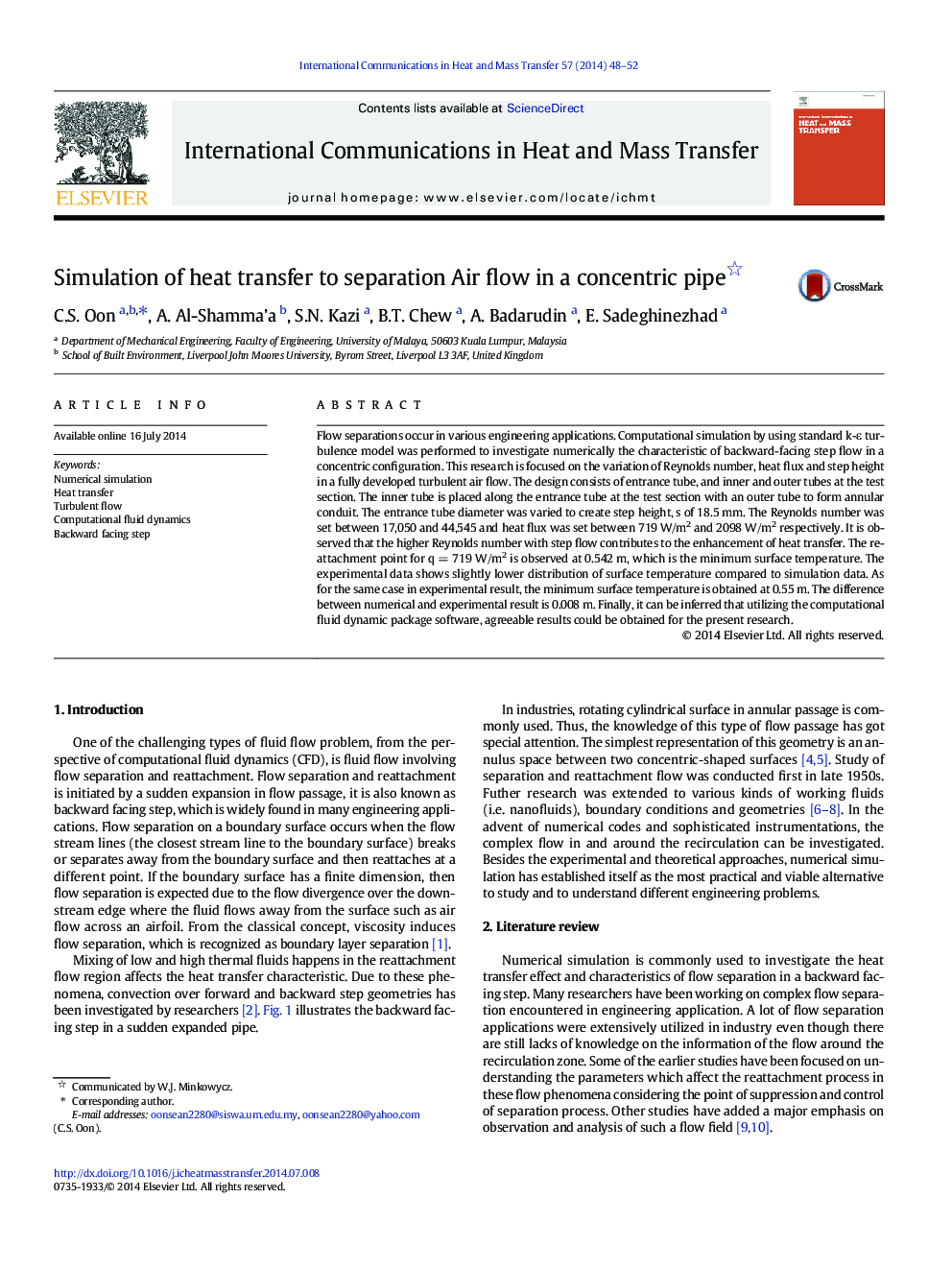| Article ID | Journal | Published Year | Pages | File Type |
|---|---|---|---|---|
| 653157 | International Communications in Heat and Mass Transfer | 2014 | 5 Pages |
Flow separations occur in various engineering applications. Computational simulation by using standard k-ε turbulence model was performed to investigate numerically the characteristic of backward-facing step flow in a concentric configuration. This research is focused on the variation of Reynolds number, heat flux and step height in a fully developed turbulent air flow. The design consists of entrance tube, and inner and outer tubes at the test section. The inner tube is placed along the entrance tube at the test section with an outer tube to form annular conduit. The entrance tube diameter was varied to create step height, s of 18.5 mm. The Reynolds number was set between 17,050 and 44,545 and heat flux was set between 719 W/m2 and 2098 W/m2 respectively. It is observed that the higher Reynolds number with step flow contributes to the enhancement of heat transfer. The reattachment point for q = 719 W/m2 is observed at 0.542 m, which is the minimum surface temperature. The experimental data shows slightly lower distribution of surface temperature compared to simulation data. As for the same case in experimental result, the minimum surface temperature is obtained at 0.55 m. The difference between numerical and experimental result is 0.008 m. Finally, it can be inferred that utilizing the computational fluid dynamic package software, agreeable results could be obtained for the present research.
